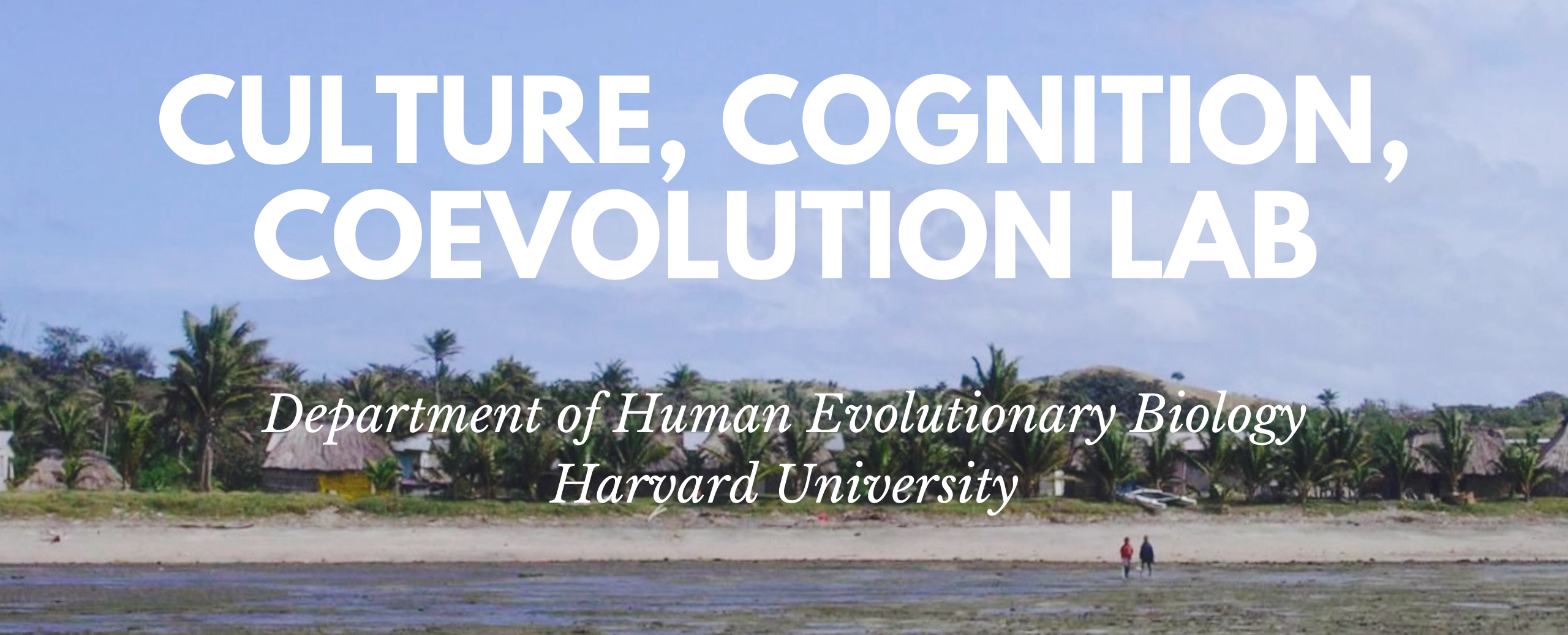Graduate Student Projects
Maciek Chudek

Prestige in Children:
Teenagers are clearly sensitive to popularity: a new kid at school quickly figures out who everyone else is looking at and preferentially imitates them. Emerging from Joe Henrich's theories on the evolution of"Prestige" (Henrich & Gil-White, 2001), I'm working with Sue Birch on testing the susceptibility of young kids (currently 3-4 year olds) to "prestige cues". Do young kids preferentially imitate an adult who they saw other adults looking at? Are they explicitly aware that they're doing this? How does this translate across learning domains? How strong is this bias and how long does it last? Does it opperate retrospectively?
Dualist intuitions in Children:
Paul Bloom and others have suggested that humans are intuitive dualists: we naturally track minds and bodies seperately and have no trouble imagining one without the other. I have recently tested this claim by observing how readily children and adults (both in modern cities and smaller-scale societies) imagine they've seen a mind swtiching bodies when watching an ambiguous animation. It that children as young as two readily make this inferential jump and that the rate at which they do this does not vary between boys and girls or change as they get older.
Sensitive Windows:
I'm working with Ben Cheung and Steve Heine on attempting to detect a sensitive window for the acquisition of culture. Do we learn implicit cultural traits faster within a certain age range? Are there some we can't learn after a certain age? By comparing immigrants of different ages and individuals of similar ages who remained in their heritage culture on a number of explicit and implicit psychological measures, we hope to answer these questions.
Cooperation and Culture:
Much of my recent work has involved building formal, mathematical models of how the emergence of cooperation (helping others at a cost to yourself, an evolutionary puzzle) synergises with the emergence of culture (learning ways of behaving from those around you). I'm finding interesting interactions between the existence of leaders, the emergence of shared social norms and the ready evolution of many different mechanisms for ensuring people aren't selfish bastards to one another. The catalyst seems to be strong dependence on commulative culture (i.e., sometimes trusting information from others more than you trust your own senses), which itself is a cooperative dilemma since it creates lucrative niches for mountebanks. This explanatory regress is fascinating and the mathematical models that can untangle it make precise predictions about human psychology that we can test with modern experimental tools.
James Broesch

Content Biases in Learning about Animals:
Main Research Question: Can we observe measurable content biases in learning about animals such that fitness relevant information encoded and recalled preferentially over information about animal diets and habitats.
Methods: This study was conducted with both adults and children in Fiji. Participants were presented with images and information about 20 novel species of animals not found in Fiji. They were then asked to recall what they could about each animal shortly after being presented with the information, and again a week and a half later.
Preliminary Results: Participants were significantly more likely to mistakenly identify a safe animal dangerous than vice versa, which is in-line with what we would predict based on fitness costs. Children exhibited content biases for preferentially encoding and remembering danger and poison information over habitat and diet information.
Collaborators: Clark Barrett , UCLA
Fijian Fish Taboos and Inference:
Main Research Question: Previous work in Fiji has indicated that Fijian taboos for pregnant and lactating women accurately identify species that are likely containciguatera, a bio-accumulated toxin found in reef dwelling marine species. We were interested in exploring if these taboos could allow individuals to make accurate assessments of bio-accumulators from North American ecosystems, indicating a folk understanding of bio-accumulation.
Methods: This study was conducted with adults in Fiji. Participants were presented with a variety of information and images, depending on their experimental condition, related to North American aquatic species. First, we wanted to see if there were consensus among participants as to what species might be taboo if they were caught in Fiji, that matches which fish are potential bio-accumulators. By varying this information by condition, we were able to probe what information was being used by participants to identify potentially toxic species.
Preliminary Results: Analysis is currently on-going.
